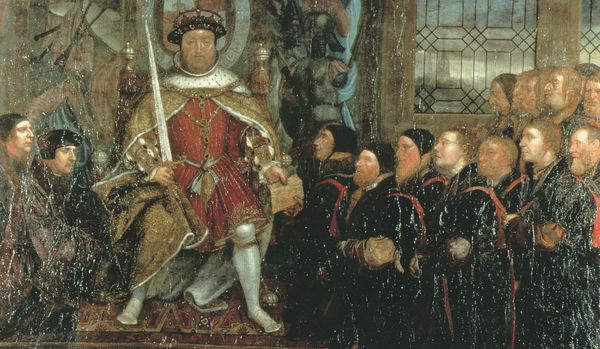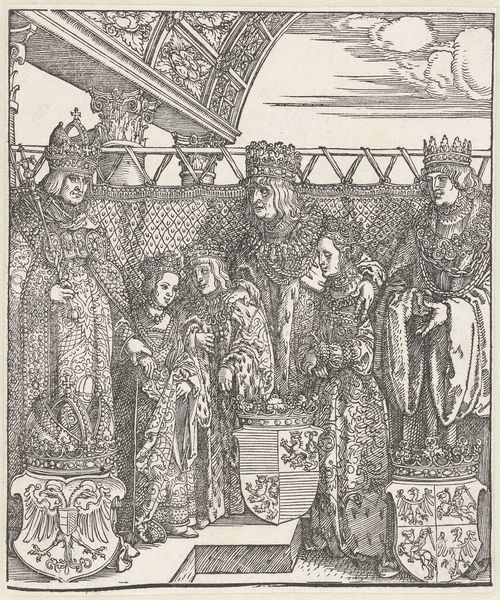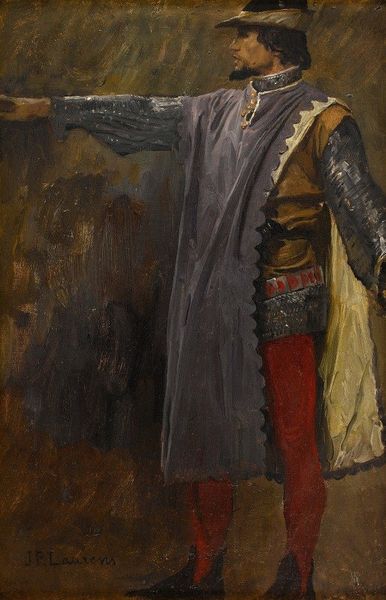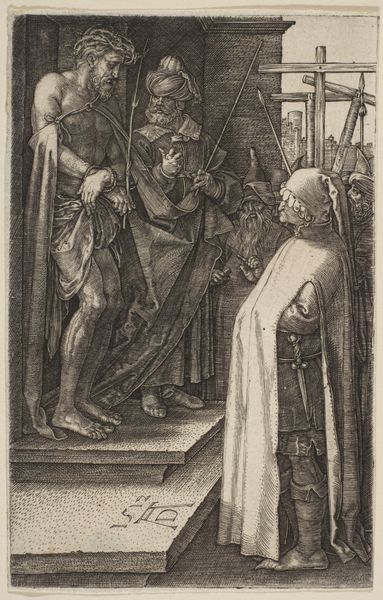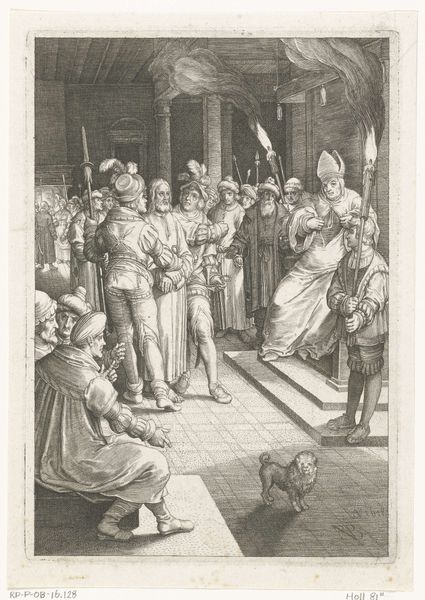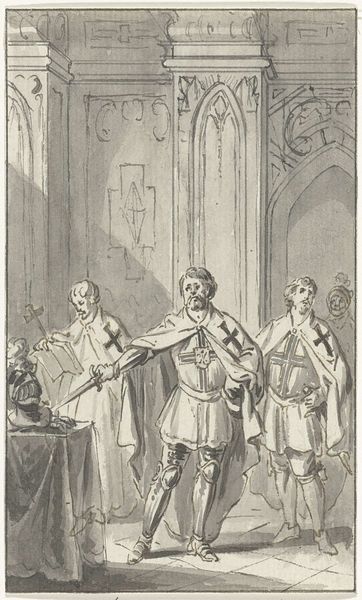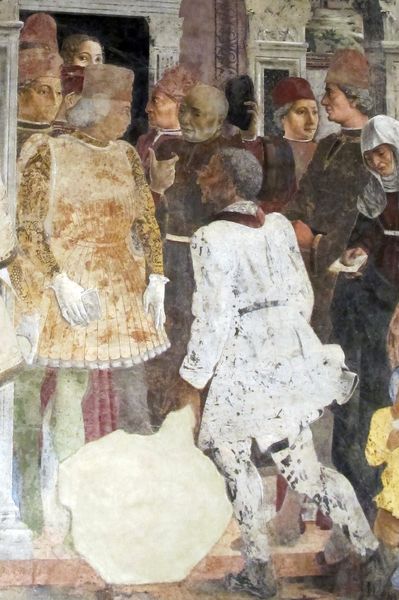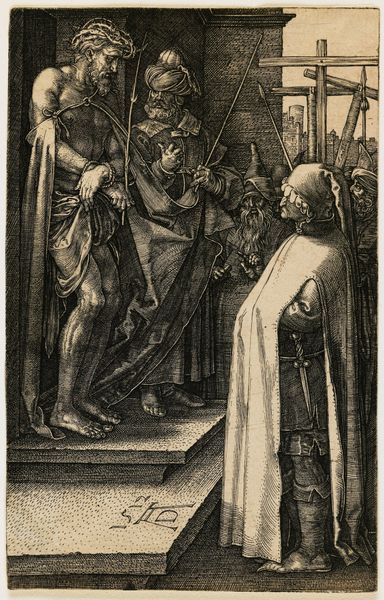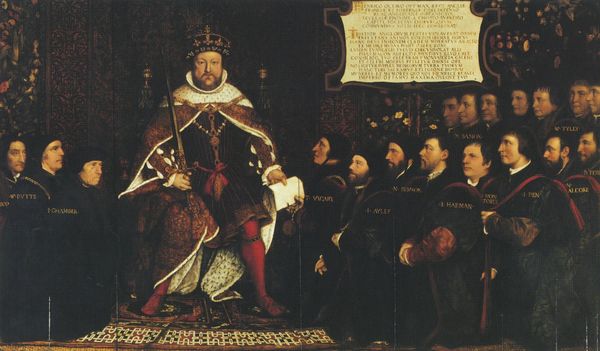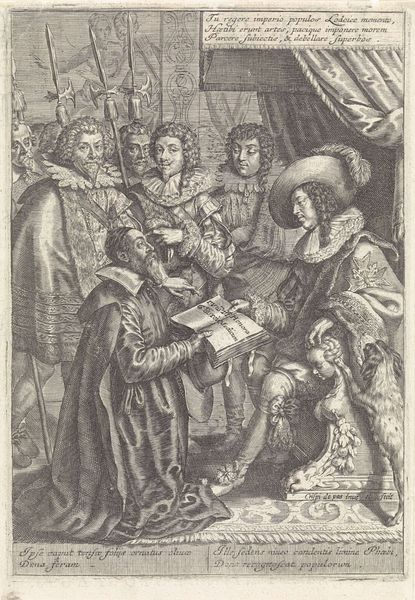
‘Come hither, gracious sovereign, view this body’, King Henry VI, Part II, Act III, Scene II 1891
0:00
0:00
#
figurative
#
possibly oil pastel
#
oil painting
#
portrait reference
#
acrylic on canvas
#
underpainting
#
painting painterly
#
facial portrait
#
portrait art
#
fine art portrait
#
digital portrait
Copyright: Public Domain: Artvee
Editor: This is Edwin Austin Abbey’s painting ‘Come hither, gracious sovereign, view this body’ from 1891. It depicts a scene from Shakespeare's Henry VI, Part II. The somber colors and the heavy robes give it a very grave atmosphere. What’s your take on the cultural implications here? Curator: Well, think about the late 19th century audience looking at this. They're steeped in Victorian ideals of morality and order, yet fascinated by the drama and intrigue of the past. Abbey’s choice of subject – a moment of political crisis and violence from Shakespeare – reflects that tension. Do you notice how theatrical it all appears, almost staged? Editor: Absolutely! The figures are posed, the curtain drawn back as if revealing a secret. Is it making a comment on the spectacle of power, maybe how easily it can be corrupted? Curator: Precisely. Consider the growing influence of mass media at the time. Images like this were consumed and distributed widely, shaping public perception of history and authority. Abbey is not just illustrating Shakespeare, he is also constructing a narrative about leadership for his contemporary viewers. What strikes you about the expressions of the onlookers? Editor: They're a mix of shock, fear, curiosity… almost as if they're both repulsed and drawn to the drama unfolding before them. It highlights how these displays are consumed by a diverse viewership, each interpreting the meaning differently. Curator: Yes, and consider the role of the Royal Academy, which exhibited this work. It was an institution deeply invested in promoting a specific vision of British art and history. How does Abbey’s painting contribute to or challenge that vision, do you think? Editor: I see how this adds layers of social meaning to this piece – beyond just being a snapshot from Shakespeare. Thanks, this really deepened my appreciation for how the art world itself shapes an artwork's cultural role. Curator: My pleasure! It’s fascinating to see how a historical painting engages in the political discourse of its time.
Comments
No comments
Be the first to comment and join the conversation on the ultimate creative platform.


